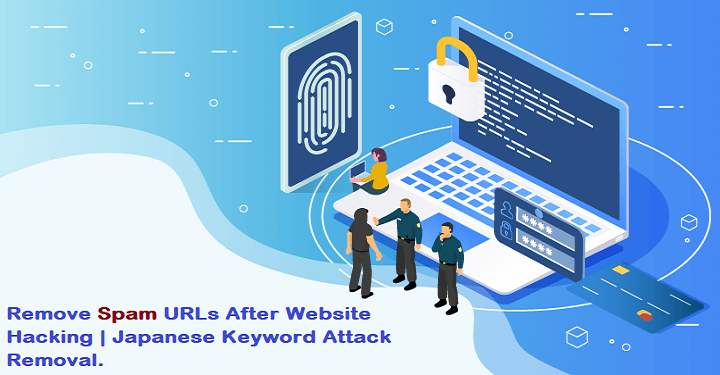Remove Spam URLs- A Japanese keyword hack causes your site to fill up randomly produced Japanese text.
By including Japanese terms in the page’s title and meta description, this particular black hat SEO approach is able to manipulate Google search results to the detriment of the infected website.
It takes place when various versions of a website are displayed to various users, including search engines. As well as “Japanese Keyword Hack,” “Japanese SEO Spam,” “known spam detected: spam-seo?japanese.0” and “Japanese Symbol Spam,” there are a number of other names for this type of attack.
You can find spammy Japanese search engine optimization (SEO) results on websites running on content management systems (CMSs) like OpenCart, Magento, Drupal, or WordPress.
Affiliate connections to shops offering knockoffs of popular brands can be found on these sites. These Japanese goods are being “spamvetised” in an effort to generate more sales and profit from your site’s outbound connections.
Japanese Keyword Attack- Remove Spam URLs
Spam URLs are one of the most common ways in which hackers insert spam onto a hacked website.
Spam URLs significantly impact your site’s Google rankings and can cause your site to get de-indexed. So, what can you do about them? Here are some quick tips:
Way 1: Remove Spam URLs on WordPress Site
If you have a WordPress website, you can use plugins to remove spam URLs from your database. The best way is using the All In One WP Security & Firewall plugin.
This plugin will scan your website for malware and remove all threats, like spammers who are trying to inject their links in the website’s source code. It also has a firewall that stops hackers from gaining access to your site by brute force attacks or other methods.
The plugin comes with many other great features such as blocking IP addresses that have tried accessing the site maliciously, tracking users’ actions on your website like login history, etc., monitoring visitors’ activities, and much more!
Way 2: Block Spam Referral Traffic with .htaccess
There are several ways to block spam URLs, but the most common way is to use .htaccess. Here’s how it works: .htaccess files are configuration files for Apache web servers; they’re located in the root directory of your website and can be used to block spam URLs.
This can be effective if you’re dealing with a fairly small number of spammers, as it won’t break functionality on your site (as opposed to other methods). However, if you have too many spammers trying to access your site through referral traffic or search engine crawlers, this solution may not work well because it will slow down all other requests—not just those from spammers!
Way 3: Disable the Remove Spam URLs Injections in WordPress
The next step is to disable URL injections in WordPress.
To do this, you need to access your website’s wp-config.php file and add the following code under the section that handles rewrite rules:
`define(‘DISALLOW_FILE_MODS’, true);`And then save it. This will prevent hackers from inserting new code on your website by overriding existing files with their own malicious files.
NOTE: If You are Looking For Best Seo Services in India You Can Visit Digital Edge The Team They Have is Outstandin, Dedicated Towards His Job. Now Lets Finish what we started:–
Way 4: Remove Spam Referrals with Google Analytics Filters
The Google Analytics filters are a good way to filter out spam referral traffic. Here’s how you can use them:
- Navigate to the Admin section and click on Filters.
- Click on Create a new filter and select ‘Custom’ in the dropdown list that appears after that.
- Select ‘Traffic Sources > Campaigns’ under the section ‘Filter Type’, then type in your Sammy domains/URLs as mentioned earlier and click Next Step as shown below:
- Click Save when done!
Way 5: Remove Spam Referrals Using a Plugin
If you are using WordPress, installing the Google Analytics Referral Spam Filter plugin is a great way to remove spam referrals. The plugin will automatically detect and filter out any referral from a site considered spammy or suspicious. It will also allow you to create custom rules for your own specific needs.
Final words
We’ve looked at why it’s important to remove spam URLs, how to check for them and how to remove them. This is a good starting point for cleaning up your hacked website. If you’re feeling overwhelmed with this project and need help from an expert, the Best Seo Course in Noida can help!

